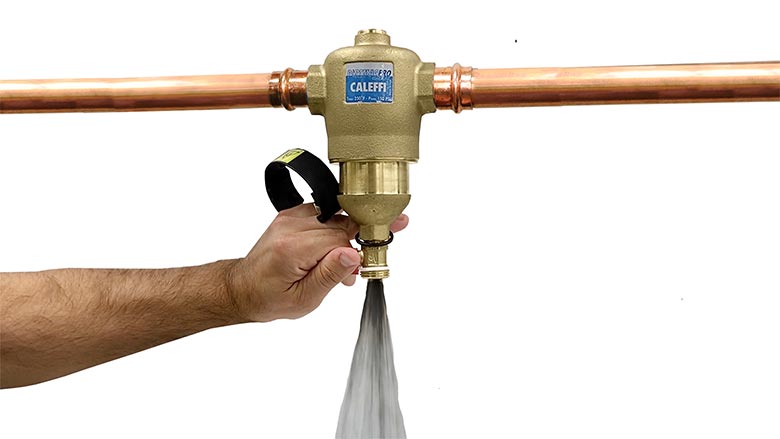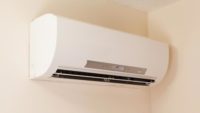I was first introduced to black water in 1972 as an apprentice at F. W. Behler, where I had just begun the never-ending learning curve. We were draining a hydronic hot water system that served a large row home with standing cast iron radiators. The water was dark colored and smelled a bit funky, but it was explained, to me, that this was perfectly normal and highly desirable because that indicated the hydronic water was essentially devoid of free oxygen.
I was fortunate to be hired at Behler because they performed lots of hydronic work servicing and replacing tons of stem and hot water boilers. The older gentlemen I was working with had decades of experience and were eager to teach this young lad the proper ways of servicing/installing all things plumbing, heating and air conditioning related. The owners, Herb Behler and Scott Behler, were third-generation owners. Their grandfather had started the business in the late 1800s and relocated to York, Pennsylvania in 1900. The end result was many of the hot water and steam systems we worked on had been installed by Behler crews. I learned from these old salts that when first filled and purged, water in a hydronic system contains free oxygen that readily and aggressively attacks ferrous materials, and basically the whole system was comprised of ferrous items: Cast iron boiler; black iron piping; and standing cast iron radiators. What’s not to rust?
Caleffi's DIRTMAG PRO, used in residential and commercial hydronic systems, features unique dual magnetic fields, increasing ferrous oxide impurity removal efficiency by 40%, the company says.
We mechanical contractors are a stubborn lot, and we tend to hold fast to things we already “know.” That black water was dark-colored due to having high concentration of magnetite. Iron oxides and magnetite are dark particles of rust and corrosion that take place in hydronic systems with ferrous components. Heavier than water, the magnetite tends to settle forming iron oxide sludge and both are initially aggressive. If new makeup water is introduced, that will carry along more free oxygen to create more magnetite. Since we had long been taught black water was a “good thing,” we never bothered to treat hydronic systems. After all, many of these hydronic systems were well past their hundred-year mark!
Passageways inside the boilers were quite large, piping too was often larger because the system had originally been gravity circulation, and cast iron radiators were big, fat and wide because most had been oversized by a wide margin. As a result, magnetite was a “What: Me worry?” deal.
In the early 1970s, energy efficiency was not a serious concern and 60% thermal efficiency was more than acceptable. No need to line brick chimneys because exhaust temperatures were well above flue gas condensing temperatures. As the decades passed, by the mid-1980s and early 1990s, thermal efficiency had peaked at 84% to 87%, which rode the borderline where flue gas condensation can quickly become an issue, which is acidic and very aggressive. Telltale signs of too much flue gas condensation were external streaking on the metal flue piping, which often led to structural failure of the flue piping itself. Exposed brick chimneys suffered too from the low pH corrosive nature of flue gas condensation. We learned to install chimney liners. Seems we mechanical contractors are more inclined to be reactive than proactive.
Then came modcon (modulating condensing) boilers starting in 1993-1995 with dramatically higher thermal efficiencies of 92% to 98%. We learned to design our hydronic systems to keep return-water temperatures below 140° F-160° F to achieve maximum sustained flue gas condensation, which granted the extra 10% boost over mid-1980s thermal efficiency by extracting the latent head in the condensate. For natural gas boilers, we could produce up to one gallon of condensate for every 100,000 Btu burned. Naturally, this acidic condensate, with a pH of 4 or less, was not good for older cast iron drainage lines, so acid neutralizers were strongly recommended, but often ignored. Where acidic condensate was allowed to run across concrete floors to floor drains, it did not take long for that to etch the concrete and upset customers! Today, acid neutralizers are easily attainable, simple to install and with clear-view chambers so contractors can see at a glance if the neutralizer pellets need to be replenished.

Modern hydronic systems now had uber-efficient modcon boilers with tiny passages for either water or flue gasses. Distribution piping was smaller in diameter, too, and we now had micro-bubble air elimination devices that performed amazingly well. For the most part, we all lived in Happyville for the next 10 years. Then, Modcon boiler heat exchangers began failing at higher rates, sometimes within just a few years. Many were replaced under warranty, which caused manufacturers to begin researching the issues that led to the heat exchangers’ untimely death.
Manufacturers of modcon boilers discovered the aforementioned magnetite was settling out of solution at critical places within the modcon heat exchangers, creating hot spots where thermal conductivity was adversely affected, which created stress and that caused cracks. There had to be a way to treat these hydronic systems and there already was, but seldom utilized by contractors. The effective treatments were, for the most part, ignored. And, why not? If there is no consequence for the contractor and homeowner the “What: Me worry” zeitgeist prevails.
Bob “Hot Rod” Rohr is a former mechanical contractor who went on to be a national trainer for Caleffi, a manufacturer of hydronic components. I first met Hot Rod at an RPA (Radiant Panel Association, now Radiant Processionals Alliance) convention in Providence, Rhode Island and we immediately became fast friends. As an aside, that’s also where I first encountered John Siegenthaler, aka “Siggy,” a fellow columnist and extraordinary engineer who speaks “contractorese” who has, over the years, stuffed my head with tons of useful information — not an easy task as I’m just as stubborn as many of my fellow mechanical contractors.
Progress marches forward with or without the contractors. Modcon manufacturers have, per Hot Rod’s prediction, begun requiring water samples when heat exchangers fail during the warranty period. They are finally denying warranty claims where the contractor has not treated the water and removed magnetite.
Around a decade ago, I saw that Hot Rod was to give a hydronics presentation near Harrisburg, Pennsylvania, a 30-minute drive away, and I signed up. In it, Hot Rod stated that manufacturers of modcons were going to begin requiring water quality tests for any heat exchangers that failed during the warranty period. TDS (total dissolved solids), pH and testing to determine if magnetite was present would be some of the requirements along with providing a hydronic water sample for the manufacturer to test. That afternoon, after returning to work, I contacted all of our local supply houses. Not one stocked the chemical system cleaner or inhibitor (a two-step process to clean and then inhibit further formation of magnetite) or magnetic/dirt filters! I ordered kits.
ECM (electrically commutated motor) circulators were becoming more available and we used them extensively. On average, 70% more efficient than the older model PSC (permanently split capacitor) circulators. Magnetite is readily attracted to the rare earth magnets in wet rotor ECM motors (hydronic water enters the rotor can to keep the motor cool). This then has the potential of clogging the rotor chamber, locking up the pump and causing it to need replacing. Yet one more way to tick off a customer because that too voids the warranty.
Caleffi manufactured a dirt magnetic filter we began using. ADEY also had a magnetic/dirt filter. These magnetic filters are comprised of very strong rare earth magnets and we have used their product, too.
At the 2017 AHRI convention in Las Vegas, I met with Neil Watson, who was manning the ADEY booth. Their active display was comprised of a glass loop with an ECM circulator and an ADEY rare earth magnetic filter. The circulating hydronic water was crystal clear until Watson pulled the rare earth magnet out of the filter housing. Immediately, the water became the old familiar black water. Upon reinserting the rare earth magnet into the filter housing, the water began to clear and was once again crystal clear in less than 30-seconds! Seeing is believing. I asked Watson what comprises a rare earth magnet: In order to be a rare earth magnet, it must be manufactured using one of the 17 elements from the Lanthanide series in the Periodic Table. Unlike ferrous magnets, rare earth magnets are 2-to-7 times stronger and Watson demonstrated that by dragging a metal bar across the ADEY magnet. It made very distinct stops along the bar, which represented there were multiple magnets within the tube. Of course, I had to ask why. To answer, Watson reinserted the rare earth magnet back into the filter housing and as it did its job and the water became crystal clear once again, you could plainly see rounded balls of magnetite forming around each magnet segment. Watson explained that represents each individual magnet’s flux field and that utilizing multiple magnets kept the waterway clear so flow would not be restricted. Use just a single rare earth magnet and you would find it created just one large bulging magnetite ball in the center and block flow.
Progress marches forward with or without the contractors. Modcon manufacturers have, per Hot Rod’s prediction, begun requiring water samples when heat exchangers fail during the warranty period. They are finally denying warranty claims where the contractor has not treated the water and removed magnetite.
They have been proactively warning mechanical contractors well in advance of this new procedure, so woe be it for those who chose to ignore the proper procedures and end up eating the cost of a new heat exchanger because their customer will not pay one thin dime for a heat exchanger that is still within the warranty period. The times, they are a-changing!




